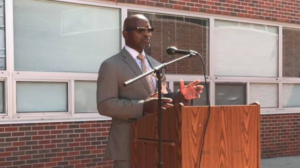Lots of coverage over the last few days regarding staff compensation in school districts. Yesterday’s Star-Ledger, for example, features an analysis of teacher compensation across the state that finds that “New Jersey’s average teacher pay of $63,154 is higher than the per capita income in the state, $50,313, but lower than for some comparable professions.” (One quibble: the analysis doesn’t factor in heath and pension benefits, though it does include shorter work years.) Yesterday’s Record finds that the highest paid teachers work mostly in Bergen and Passaic counties. TodayBob Braun looks at a new study out from Rutgers that private employees make “11 percent more in wages and 5 percent more in total compensation than public workers.”
Maybe NJEA’s leadership has been right all along. Teachers don’t get paid too much, they get paid too little. Many have graduate degrees, work tirelessly for their students, spend hours every day prepping for classes, analyzing data, evaluating pupil work. Yet something is out of whack. (Hold that thought about administrative salaries.) NJ’s educational costs are unsustainable, so something’s got to give.
Maybe the problem is not that we pay our teachers too much. Maybe we just have too many teachers.
NJEA’s leadership firmly believes that tenure is just due process. However, school districts across the nation (see this pivotal piece from The New Yorker, “The Rubber Room”
) are forced to overstaff to compensate for ineffective teachers. In private industry you’d fire them. In public education, you can’t. So you hire someone else and both stay on the payroll. If we reformed tenure, we’d enable districts to function with fewer staff, thus allowing us to spend less and pay teachers more.
Even without tenure reform, our peculiar brand of municipal madness begets overemployment of teachers. Right now, the state average is 11.1 students per faculty member. Some high-needs districts, however, can justify crowded staffing. For example, Woodrow Wilson High in Camden City (District Factor Group of A) has a ratio of 7.1 students per faculty member. Makes sense: 14.7% of Wilson’s 986 students are English Language Learners and 26.1% are classified as eligible for special educational services. The academic achievement is dismal. The total annual cost per pupil there is $16,178.
For something completely different, take a look at Englewood Cliffs in Bergen County, an I DFG. 268 kids attend this grades 3-8 school. 1.1% are English Language Learners. 13.7% qualify for special education services. Academic performance is super. Ratio of students to faculty member? 7.3%. Total annual cost per pupil is $20,169.
In other words, we staff a ritzy, high-performing, low-needs district at the same level as one of our very worst urban districts. No egg on Englewood Cliffs’ face; it’s too small to be efficient.
How does Jersey with its 11.1% student/teacher ratio compare nationally? From the National Center for Education Statistics:
The ratio of students to teachers, which is sometimes used as a proxy measure for class size, declined between 1990 and 2006, from 17.6 to 15.9 students per teacher for all regular public schools.
Too many teachers in New Jersey? Just asking.



2 Comments